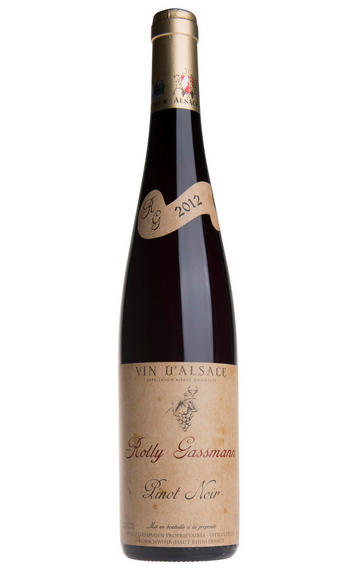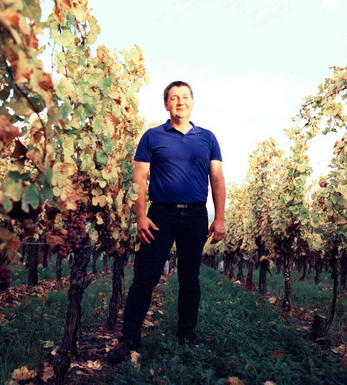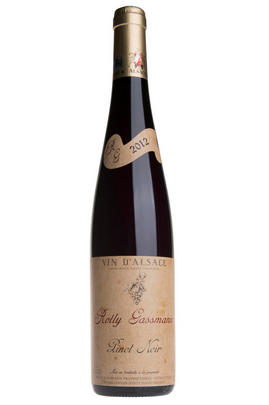
About this WINE

Rolly Gassmann
Located in Alsace’s Haut-Rhin village of Rorschwihr, near Ribeauvillé, lies the family domaine of Rolly-Gassmann, whose roots date back to 1661. The 51 hectare estate (40ha in Rorschwihr, 10ha in Bergheim) is owned and run by Marie-Therese, Louis & their son Pierre Gassmann, along with a team of 17 workers.
They work to the principles of biodynamic viticulture yet curiously also apply weed killers. They produce on average 300,000 bottles per annum and they are notable for having more than four years’ stock (1 million bottles) in stock at any one time, which would account for the regular visits by French customers; they only export 20% of their annual production.
The 250ha commune of Rorschwihr, first noted for its wine in 742AD, lies on one of Alsace’s many faultlines (ala Burgundy), giving rise to a complex tapestry of 21 different soil types, particularly limestone, sandstone, granite and silt. So complex in fact that when the authorities sought to lump together vineyards to form large plots as part of the new Grand Cru system (1970s/80s), the villagers rose up and declared that either there would be 12 Rorschwihr Grand Crus or none at all. Hence today there are no Grand Crus in Rorschwihr.
That said there are some standout Crus/lieux-dits that would surely qualify as Premier Cru sites if ever this classification was tabled. Limestone rich vineyards Silberberg, Kappelweg & Pflaenzerreben are rated for their Rieslings , Rotleibel’s darker brown clay and silt soils are meant for Pinot Gris, while the oolithic white lime stone of Oberer Weingarten & Stegreben are perfect for the Gassmann’s Gewurztraminer.
Vinification takes place in large oak barrels and stainless-steel, giving wines of great elegance, gentleness and drinkability.

Pinot Noir
Pinot Noir is probably the most frustrating, and at times infuriating, wine grape in the world. However when it is successful, it can produce some of the most sublime wines known to man. This thin-skinned grape which grows in small, tight bunches performs well on well-drained, deepish limestone based subsoils as are found on Burgundy's Côte d'Or.
Pinot Noir is more susceptible than other varieties to over cropping - concentration and varietal character disappear rapidly if yields are excessive and yields as little as 25hl/ha are the norm for some climats of the Côte d`Or.
Because of the thinness of the skins, Pinot Noir wines are lighter in colour, body and tannins. However the best wines have grip, complexity and an intensity of fruit seldom found in wine from other grapes. Young Pinot Noir can smell almost sweet, redolent with freshly crushed raspberries, cherries and redcurrants. When mature, the best wines develop a sensuous, silky mouth feel with the fruit flavours deepening and gamey "sous-bois" nuances emerging.
The best examples are still found in Burgundy, although Pinot Noir`s key role in Champagne should not be forgotten. It is grown throughout the world with notable success in the Carneros and Russian River Valley districts of California, and the Martinborough and Central Otago regions of New Zealand.



Buying options
Add to wishlist
Description
Such a refreshing wine and so easy-drinking too. Pale violet/red/blush in colour, the nose delights with lifted, raspberry ripple and joyful summer fruit aromas. Pierre Gassmann has made this early-drinking Pinot with great sensibility, using fruit from Rorschwihr's marne and limestone soils, aged in large 45/50 hl barrels to gently refine it. Light bodied, perfectly pitched at 13% abv, it's such a juicy, supple wine, with no tannins to speak of. A basket of sweet summer fruit in a glass! Crystal-clear and effortless, it finishes dry with classic Pinot sapidity and scented violet aromas. Delicious with a cold salmon starter. Rolly Gassmann is becoming a name for sumptuous Pinot Noir!
David Berry Green
wine at a glance
Delivery and quality guarantee